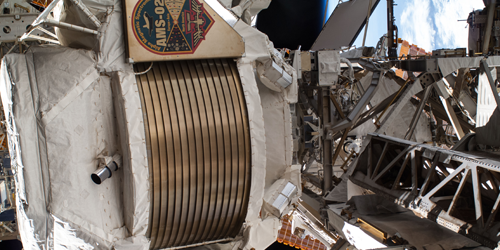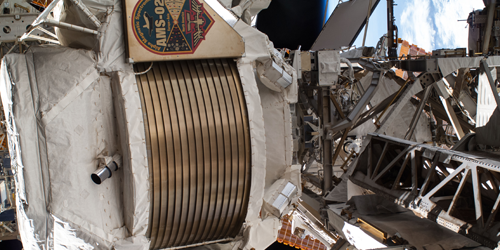Space Measurements of Secondary Cosmic Rays
Cosmic explosions such as supernovae send cosmic rays—bare atomic nuclei—zipping away at nearly the speed of light. When these nuclei collide with the sparse gas between stars, they produce a cascade of particles, known as secondary cosmic rays. Now, using the Alpha Magnetic Spectrometer (AMS) onboard the International Space Station, Samuel Ting at the Massachusetts Institute of Technology, Cambridge, and his colleagues have characterized, with unprecedented precision, three species of secondary cosmic rays. They found that these cosmic rays’ energy spectra—the particle fluxes as a function of energy—are distinctly different from those of primary cosmic rays.
The AMS collaboration measured over 5 million lithium, beryllium, and boron nuclei as they traveled through the AMS’s magnetic field, which is 3000 times stronger than the Earth’s. The researchers found that the three species responded identically to the magnetic field, meaning that their energy spectra had the same shape. They also observed a spectral “hardening” of the secondary cosmic rays—a larger number of particles at high energies than would be expected from a standard power law. Such hardening has previously been observed by the AMS collaboration in primary cosmic rays such as helium, carbon, and oxygen. Surprisingly, however, the amplitude of this hardening was larger for secondary cosmic rays than for primary cosmic rays. According to the authors, this difference implies that the spectral shape of secondary cosmic rays changes as the particles propagate through interstellar material. These new observations suggest that various mechanisms—such as the interaction of the particles with slowly expanding supernova remnants—may need to be taken into account to accurately describe the propagation of secondary cosmic rays through space.
This research is published in Physical Review Letters.
–Katherine Kornei
Katherine Kornei is a freelance science writer based in Portland, Oregon.





